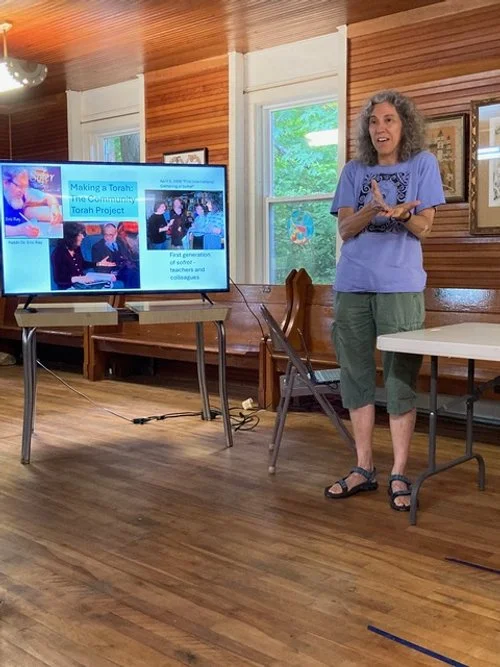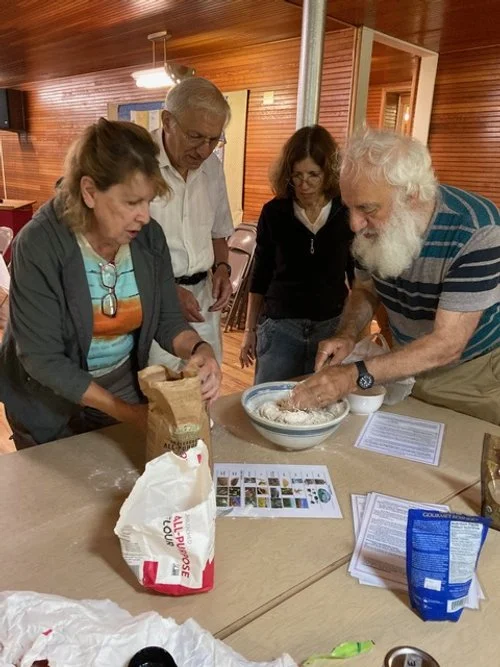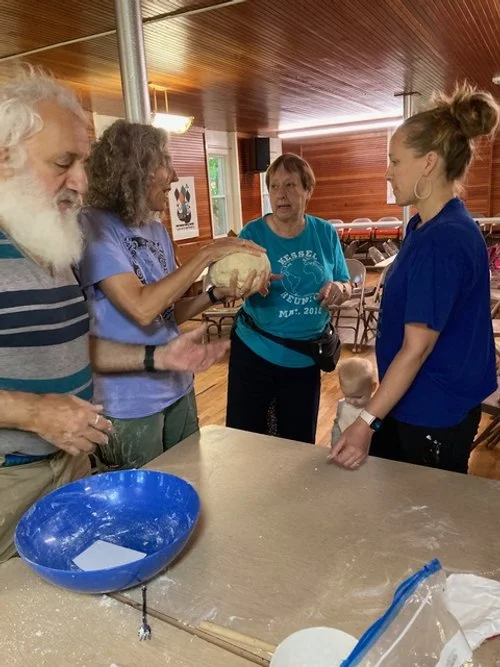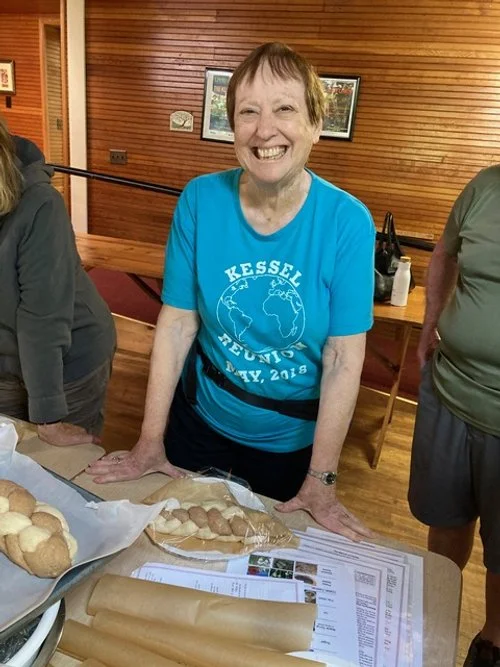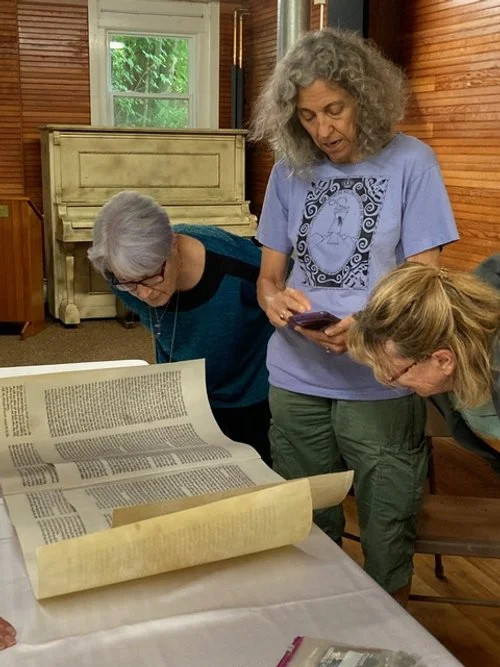“Double the Mitzvah, Double The Fun” Bread and Torah Workshop: Hands-on Experiences of Jewish Traditions
Reported by Lucy Goodhart with Melissa Potter
On July 19, BHC welcomed Rabbi Linda Motzkin, soferet, parchment maker, and scribal artist, and Rabbi Jonathan Rubenstein to lead a workshop on bread and Torah.
Twelve baker/torah making students gathered around three large bowls, to make different flavors of challah -- a plain, a raisin challah and a wholewheat challah — where some of the dough was dyed with a little bit of unsweetened chocolate so that the braided challah came out "marbled" as a mix of plain looking whole wheat and a darker strand. We had a delicious plain challah with poppy seeds on top for the kiddush afterwards.
The challah making was relaxed and accessible -- this was not French nouvelle cuisine! -- but we got taught in practical way how to roll out the challah and how to know when the dough was done. It should not stick to your hand when you pick it up but it should feel sticky if you push your fingers into it. And, when you roll it out, you should dust a little flour on your fingers, but not directly on the dough. That will give you a moister bread. We also had hands-on training in how to braid a six-braid loaf, using an approach called "move the wing to the middle and then replace the wing." If we can't remember this, Rabbi Jonathan, who leads the braiding, has videos on challah braiding at the Bread and Torah web site.
A whole different kind of excitement came when we discussed Rabbi Linda Motzkin’s role in being a Torah scribe. This was no dry lecture on calligraphy. Rabbi Motzkin relayed to us that, in 2006, she was one of the first six women in the world learning to be a soferet - female Torah scribe. As of today, there are only 13 women in the world who have written all or part of a Torah scroll.
Women have not, until the 21st century, become Torah scribes because the traditional interpretation of our texts does not permit women to write Torah scrolls. For that reason, Rabbi Motzkin could not buy scribal materials from a traditional scribal supply shop.
Rabbi Motzkin explained how she came to be accepted as a student of scribing and brought amazing richness to our consideration of Torah by describing how she obtains her materials. Because she could not obtain parchment through the traditional channels, she decided to create her own. Parchment is the skin of kosher animals, appropriately treated and sanctified. Rabbi Motzkin detailed how she transforms a deer hide into parchment, by repeatedly soaking, stretching and sanding. Because Rabbis Jonathan and Motzkin live in Saratoga Springs, NY, surrounded by an active hunter community, she was able to obtain turkey feathers and deer skins from hunters who don't want to simply throw them away.
Rabbi Motzkin is creating her Torah as a community-centered project. After giving us the background to her Torah and what it means to be a soferet, she showed the group two sections of her Torah that had already been written out and proofed three times. To connect them, under her supervisions, we used an awl to punch nine holes in the parchments, stitch them together using a needle and sinew (not thread), then reinforcing the seam with tabs.
This exercise was shared by everyone present and it gave us a new insight into the Torah: a sacred object built from material that is very durable, historic and flexible. It comes to us from a living being, whose hide is then worked on by many, many different people using skills that have come down through generations. It was a different training in what makes the Torah.
We all signed a book indicating what each of us did to support the creation of this Torah, joining Rabbi Motzkin’s record of every person who has been involved. She also took photos of each person doing their part. So far, over 4300 people worldwide have participated in this project.
Learn more about The Bread and Torah project here.
This program is funded in part by a grant from the Jewish Federation of New Hampshire.


